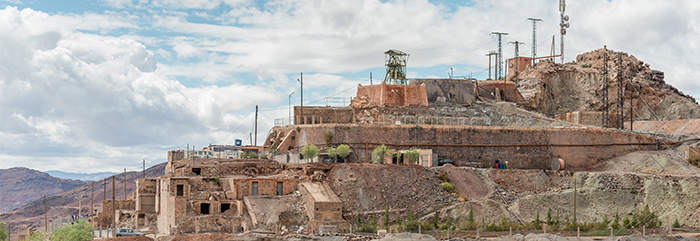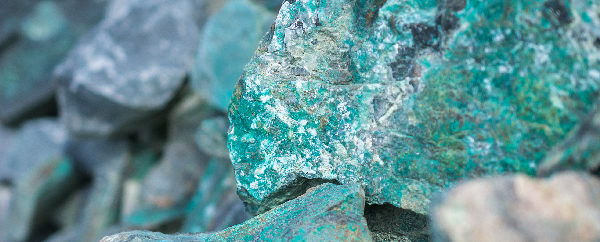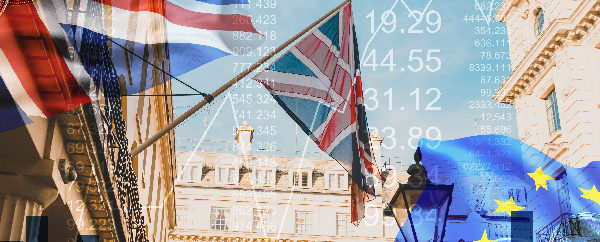While blockchain technology is being used to underpin innovations like cryptocurrencies, IBM are looking to it as a way to support ethical cobalt mining and reduce the “collateral damage” caused to the environment in places like the Democratic Republic of Congo.
In a post on Big Blue’s blog earlier this year, IBM Industries content producer Jordan Teicher explained how mining operations have become a blight on the landscape and are associated with unsafe levels of cobalt in the local drinking water.
He cited the research of Benoit Nemery, professor of toxicology at K.U. Leuven university in Belgium, who has investigated the damage done by mining in the DRC’s ‘copper-cobalt belt’.
The professor has visited the area each year since 2006 and describes it as “chaotic, very dirty and very obviously polluted”, with conditions significantly worsening after cobalt ore was found there ahead of his trip in 2014.
The Congo cobalt rush
The discovery of cobalt’s ore, heterogenite, brought a rush of would-be miners to the working class neighbourhood of Kasulo in Kolwezi.
These prospectors, locally known as creuseurs, went to work with picks and shovels to extract the ore by hand – a scene Professor Nemery described as “spectacular and tragic”.
He told IBM: “I have pictures where you can see everything had been turned over. There were pits 20 metres deep and a lot of rubble everywhere, and children playing around in it. Some people were keeping the minerals in their own homes.”
Cobalt exposure can be harmful to the organs of the body, including the skin, lungs, heart and eyes, and long-term exposure is also linked with an increased risk of cancer.
Over the course of 2014-15, Professor Nemery worked with colleagues to survey the biological condition of creuseurs, local residents and children in Kasulo.
The findings, published in the September 2018 edition of Nature Sustainability, reported some of the highest urine concentrations of cobalt and other trace metals the team had ever seen.
Why is cobalt important?
Cobalt is used in lithium ion batteries, among other electronics applications, alloys and catalysts.
Importantly, lithium ion batteries are used in electric vehicles – so as the automotive sector looks to go green, demand for cobalt is set to rise in the years to come.
This led to a surge in cobalt prices in early 2018 as investors anticipated a level of demand that as yet has not emerged, and this led to a peak value of around $95,000 per tonne before cobalt prices crashed by 70% of their value.
Ironically, the cobalt rush in the DRC was partly responsible for this, as the combined output of the creuseurs flooded the market with more cobalt than was needed.
The DRC remains the biggest supplier of cobalt on the planet, responsible for well over half of the total annual cobalt production in recent years.
As a result, cobalt prices may currently be substantially lower than their long-term market value, particularly when the rising demand for electric vehicles is factored into their outlook.
A Morgan Stanley report cited in the IBM blog post indicates that demand for cobalt will rise eightfold by the second half of the 2020s.
How to prove cobalt is safe
For investors keen to support electric vehicles as part of a sustainable responsible investment (SRI) portfolio, cobalt poses a dilemma.
It’s essential for the lithium ion batteries EVs run on, but it’s impossible to trace the original source of cobalt once it is smelted together to create the metal in bulk.
With the environmental and public health implications raised by the heterogenite mining activities of the creuseurs in Kasulo, how can investors feel confident that their portfolio adheres to the principle of ‘first, do no harm’?
IBM have entered into a consortium with LG Chem, RCS Global and Ford to create a blockchain-powered way to reliably trace cobalt all the way back to its point of extraction.
The pilot scheme aims to provide the necessary paper trail from the original cobalt mine right through to the final manufacturer to allow materials within the cobalt supply chain to be produced, processed and traded responsibly.
How does blockchain help?
Blockchain by its very nature is suited to improving traceability in supply chains, and in the pilot scheme, it is used to track the progress of cobalt from the DRC, to South Korea where LG Chem’s cathode and battery plant is based, to the USA where Ford incorporate it into EVs.
All of this takes place on the IBM Blockchain Platform, powered by Hyperledger Fabric from the Linux Foundation, giving real-time visibility to all network participants with the necessary permissions.
Max Nelson, a global business development executive for industrial products at IBM Global Markets, said in the blog post: “We’re organised across 12 different industries so we have the industry knowledge and leadership to bring this together. That’s how we’ve been successful in bringing in participants across the supply chain.”
The pilot scheme is focused on Ford but Mr Nelson added that upon its completion, IBM believe they will be able to encourage OEMs, defence and aerospace companies to join the platform.
And while the programme has so far only included large-scale miners in the DRC, the aim is to expand it to include creuseurs and similar small-scale and individual prospectors.
He explained: “The broader purpose of the network is to make a true positive social impact and help address the root causes of the challenges faced by the artisanal miners.”
This is good news for ethical investors keen to maintain an SRI portfolio with access to the EV market in developed countries including the US, without causing environmental harm in economies like the DRC.
https://www.ibm.com/blogs/industries/blockchain-cobalt/
Disclaimer: The information provided here is not investment, tax or financial advice. You should consult with a licensed professional for advice concerning your specific situation.




